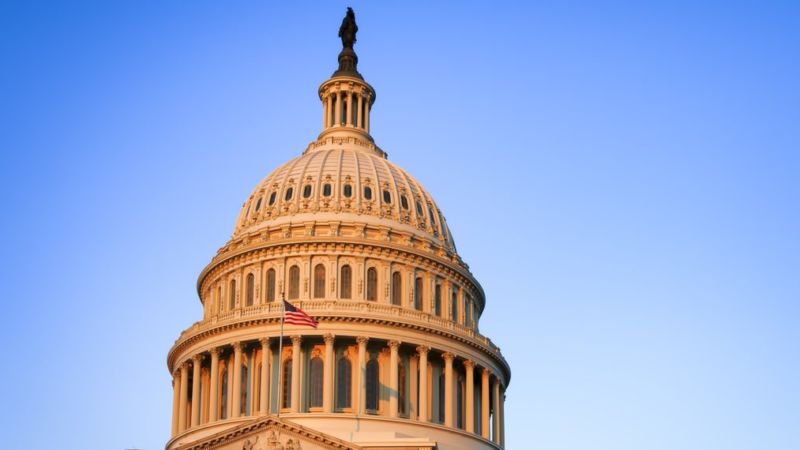On June 4, 2018, at the OECD’s annual international tax conference in Washington, D.C., the U.S. Deputy Assistant Treasury Secretary for Int’l Tax Affairs, LG “Chip” Harter, spoke about the pending guidance on various international tax measures in the U.S. Tax Cuts and Jobs Act (TCJA). Mr. Harter said that the TCJA is the broadest legislation on implementation of OECD BEPS project measures.
Editor’s Note: A member of the BEPS Global Currents editorial team attended the OECD conference.
Section 965 Transition Tax
As part of the shift to a hybrid territorial tax system (i.e., a 100% deduction for the foreign-source portion of dividends received from 10%-owned foreign corporations), the TCJA introduced a transition tax (or “toll tax”) in new Section 965, which requires taxpayers to pay immediate tax in 2018 for any accumulated post-1986 E&P sitting outside the U.S. taxpayers may elect to pay the transition tax in installments over eight years, beginning in 2018.
While Treasury has issued some guidance on the transition tax to date – Notice 2018-7, 2018-4 IRB; Notice 2018-13, 2018-6 IRB; Rev. Proc. 2018-17, 2018-09 IRB; Notice 2018-26, 2018-16 IRB; and IRS Publication 5292 (How to Calculate Section 965 Amounts and Elections Available to Taxpayers) – several Treasury officials have said at recent tax conferences that they do not intend to issue any more “piecemeal” guidance on the transition tax. Instead, Treasury intends to issue proposed regulations on the transition tax in 2018.
At the OECD conference, Mr. Harter said that Treasury has a good working draft of these proposed regulations, which should be released by end of July 2018.
Other TCJA Guidance
Mr. Harter said that Treasury’s goal is to issue final regulations on all the international TCJA measures (i.e., transition tax, base erosion and anti-abuse tax (BEAT), global intangible low-taxed income (GILTI), and foreign-derived intangible income (FDII)) by June 2019, so that they can apply retroactively from January 1, 2018, pursuant to Section 7805(b).
Editor’s Note: Treasury Regulations are presumptively prospective in application, unless one of the following exceptions in Section 7805(b) applies:
- The presumption of prospective application may be overridden by Congressional authorization.
- The Treasury Secretary may provide that any regulation may take effect retroactively to prevent abuse, or to correct a procedural defect in any prior published regulation.
- Treasury Regulations that apply only to internal agency policies, practices, or procedures may be retroactive.
The BEAT (new Section 59A) represents a watered-down version of the destination-based cash flow (DBCF) tax included in the June 2016 U.S. Republican tax reform blueprint. The BEAT aims to limit base erosion through excessive outbound deductible payments. The tax applies to deductible payments to foreign affiliates from domestic corporations. It also applies to foreign corporations engaged in a U.S. trade or business that compute tax on effectively connected income (ECI).
The BEAT applies to corporations, other than regulated investment companies (RICs), real estate investment trusts (REITs), and S corporations, that have average annual gross receipts of at least $500,000,000 for the three-year tax period ending with the preceding tax year and a “base erosion percentage” of at least 3% (2% for certain banks and securities dealers). The tax rules apply to base erosion payments paid or accrued in tax years beginning after December 31, 2017.
Mr. Harter said that Treasury is exploring the BEAT based on the grant of regulatory authority in the TCJA, but did not discuss any specific aspects of the tax that the government is considering.
Editor’s Note: On March 22, 2018, Pierre Moscovici, Tax Commissioner at the European Commission, said during a meeting of the European Parliament that the EU may challenge the FDII and BEAT rules as violating various international standards. Regarding the FDII rules, Mr. Moscovici said that they may violate the OECD BEPS Action 5 recommendationson substantial activity requirements for intellectual property (IP) incentive regimes. These rules may also violate World Trade Organization (WTO) rules. Mr. Harter did not address these concerns during the 2018 OECD conference.
Under the TCJA, U.S. corporations can take a 100% deduction for the foreign-source portion of dividends received from their 10%-owned foreign corporations. GILTI aims to counteract the incentive created by the participation exemption by targeting foreign IP that generates high foreign returns. The GILTI rules operate in a manner similar to the Subpart F rules, since they require U.S. shareholders of controlled foreign corporations (CFCs) to include in gross income their GILTI for the taxable year.
For tax years beginning after December 31, 2025, the effective tax rate on GILTI is 13.125%. The minimum foreign tax rate, with respect to GILTI, at which no U.S. residual tax is owed, is 16.406%. If the foreign tax rate on GILTI is 0%, then the U.S. residual tax rate on GILTI is 13.125%.
While Mr. Harter did not discuss any aspects of the GILTI rules that may be subject to Treasury Regulations at the 2018 OECD conference, he said that Treasury welcomes other countries to implement minimum foreign-source tax regimes, similar to the GILTI rules.
During the same panel event, Michael Graetz, Professor of Tax Law at Columbia Law School, said that the GILTI rules are “like a truck built on a car chassis” that raise supply chain issues for taxpayers.
Click here for more information on our BEPS research and technology solutions to address your immediate and ongoing needs.







